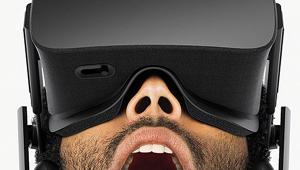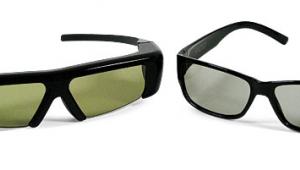...3D TV is a failure because the majority of people do not like wearing the glasses, yet VR is the NEXT BIG THING since people will just looooove wearing a portable refrigerator on their heads.
Virtual Reality Is Here Beyond Rift: Other Goggles to Oogle
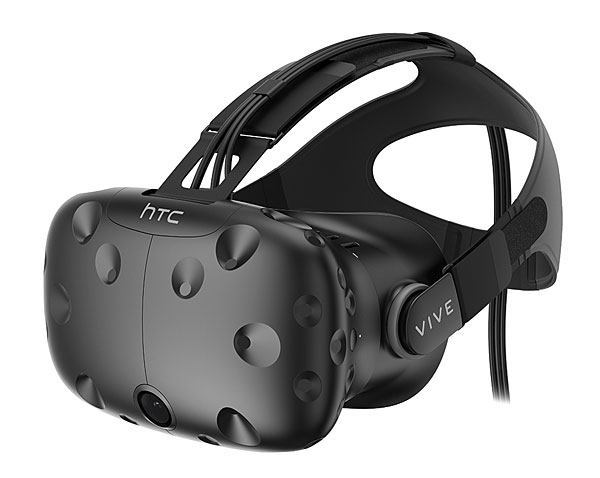
HTC Vive ($800)
Built by HTC but designed and “powered” by Valve, the Vive is the Rift’s most direct alternative. Their specs are far more similar than they are different: same resolution OLED screens, same refresh rates, same reliance on full-
motion tracking.
There are two main differences, however. The first is that the Vive already comes with the handheld controllers that let you feel like you have hands in the virtual world. The Rift’s Touch controllers should be available by the time you read this, but for around $200—which will make the Rift system price the same as the Vive price.
The other difference is in how the devices track your movements. The Rift has emitters in the headset. The Vive uses two laser-emitting base stations and photoreceptors on the headset. For now, the only real difference this makes is that the Vive lets you move around more, in a space of 15 square feet. The Rift’s virtual space is only 5 x 11.
Which will have more games? And how many games will be playable across both platforms? It remains to be seen. Each already has some exclusives. For now, both the Rift and the Vive are incredible, and there probably isn’t a bad choice between them. Ferrari or Porsche, take your pick.
Gizmag has a great breakdown of the pros and cons of both at bit.ly/GizMagRiftvVive.
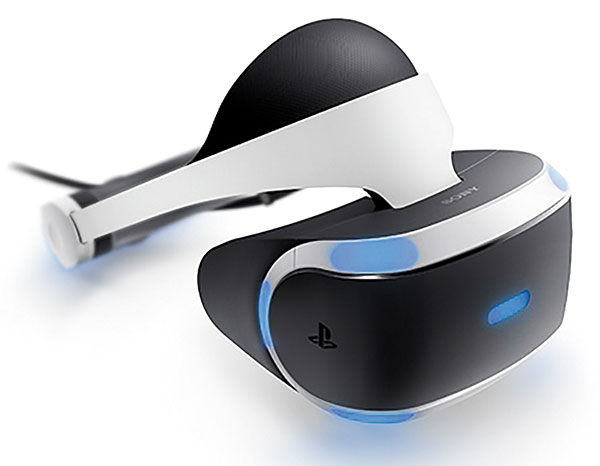
Sony PlayStation VR ($400)
Due in October, the PSVR is designed to work with the PS4. Given that hardware limitation, it’s not surprising that the PSVR is slightly scaled back compared with the Rift and the Vive. Resolution on the OLED screen is 960 x 1080 per eye, with a 90- or 120-Hz refresh rate. Field of view is also slightly less, at 100 degrees (Vive and Rift are 110). The PlayStation Camera will help with positional tracking.

Although not as hardcore as the Rift or the Vive, the PSVR is far more accessible and requires only a PS4 console to run; consequently, it’s almost certain to be far more popular, and there are dozens of games already in the works. If you don’t have a PS4, total cost of entry is $800, compared with $600 to $700 for the serious gaming PC required by the other headsets—plus, of course, the cost of the headset itself.

Samsung Gear VR ($100)
Along with Google Cardboard (see below), the Gear VR is perhaps the best-known representative of the lower class of VR, the kind run only by your smartphone and limited by its more challenged processing power and fewer sensors. The Gear VR is built by Samsung, but it’s “Powered by Oculus.” For $100, it seems like an easy buy, except it only works with certain phones—specifically, the Galaxy S6, S6 edge, S6 edge+, Note 5, S7, and S7 edge. The Gear VR is essentially just a plastic headset with lenses and a control pad on the side, allowing you to interact somewhat with your environment. For example, you can spin around 360 degrees in a virtual world without actually having to spin around in your chair (which also works). I’d say that the Gear VR is a real taste of what you get with actual VR. What it does, it does well—namely, photo spheres from around the world (and created sci-fi worlds) and 360-degree videos. It doesn’t do gaming very well, which probably isn’t a surprise, given that you’re still limited by the processing power of the phone.

Sure, it’s a great peripheral—but commensurate with its price, it’s not the full Monty of the Rift. You can check out my full review on the S&V website at bit.ly/Tech2GearVR.
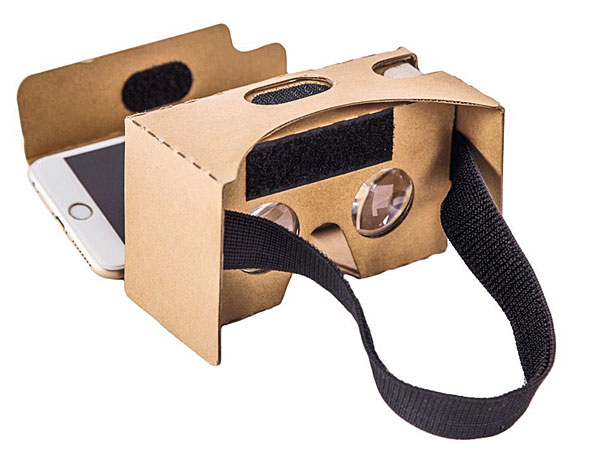
Google Cardboard ($20 or less)
If you’ve not seen a Google Cardboard headset, it’s what it sounds like: a structure made from flat corrugated cardboard, containing a pair of inexpensive lenses. It folds up into goggles that encase your smartphone as the video source. Amazon sells many versions, some with an elastic band to hold the whole thing to your head, and there are Google Cardboard experience apps for both Android and iOS in the Google and iTunes stores.

In theory, Google Cardboard gives you a tiny taste of what the more elaborate headsets offer. But you get what you pay for. The experience isn’t great. Judging VR based on this would be like eating a raisin and deciding that wine sucks.—GM
- Log in or register to post comments

The difference is impact. While 3D TV/film is, at best, "kinda neat" to, at worst, distracting and a little hard to watch, VR will be immersive. The inconvenience factor vs the reward is totally different between 3D and VR. The 3D glasses required for 3D TV/film are a mild pain in the butt for not much reward. VR's big, heavy goggles (which I'm sure will lighten over time) for a totally immersive, "I'm really there," experience, will be worth the price.

VR is a great thing, we are looking forward to the future of VR.
http://www.luxuryhandbagsuk.org.uk/ replica designer handbags

This blog on virtual reality is incredibly insightful! It’s fascinating to see how VR technology has evolved since this post was written. As we move into 2024, the concept of an alternate reality becomes even more , with advancements pushing the boundaries of what we thought possible. I’m excited to see how these innovations continue to shape our experiences and perceptions. Thanks for sharing such an engaging read.

Meta Quest is a great device for immersing yourself in the world of virtual reality. In their library, you can find many free games and programs, which cannot but please. You can find detailed information about this on their website and if you need further assistance, contact their support team here https://meta-quest.pissedconsumer.com/customer-service.html Their team is on call 24/7 and ready to help regardless of the situation in which you found yourself.

I'm convinced from my own experience that Meta Quest has a simple and clear interface. Setting up the device takes a little time. The quality of the device is simply excellent, especially considering its affordable price. This is what other users say in meta quest reviews on this site. From these reviews, it is very easy to conclude that many people are satisfied with their product, and they do not regret their purchase.
